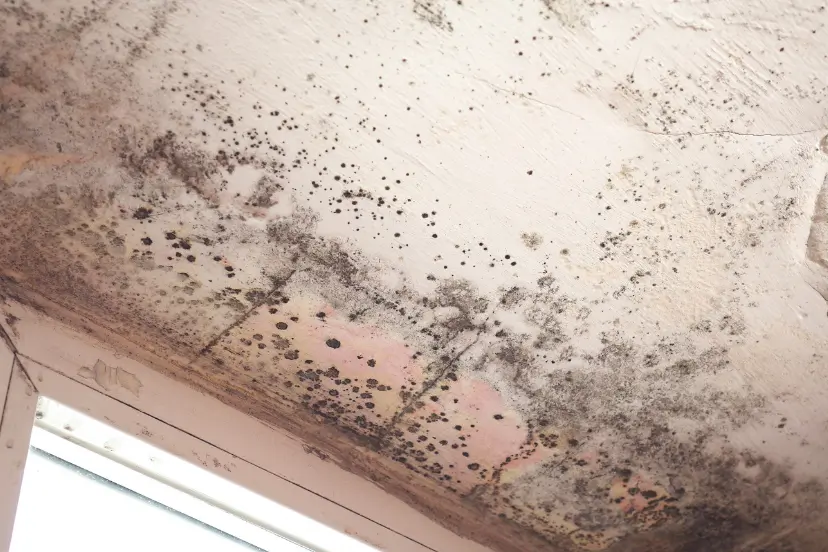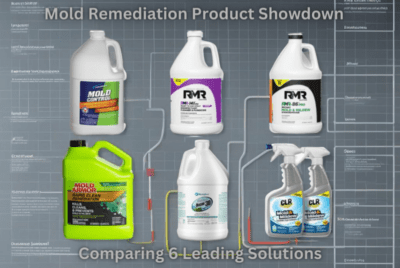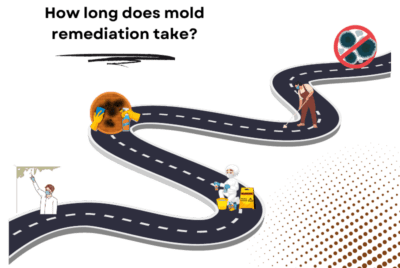How Long Does It Take for Mold to Grow
Mold is a common issue in homes and buildings, especially following water damage, leaks, or high humidity. It’s not just a structural problem but also a health hazard, causing allergic reactions, respiratory issues, and in severe cases, serious health problems, so understanding ‘How Long It Takes for Mold to Grow’ is key to keeping your home safe and healthy.
The Timeline of Mold Growth
- Initial Stage (24-48 Hours): Mold spores, which are always present in the environment, begin to germinate and grow within 24 to 48 hours in the presence of moisture. This early stage of mold is invisible to the naked eye.
- Hyphae Growth (3-12 Days): After germination, mold starts to grow hyphae, which are thin root-like structures. These hyphae penetrate into porous materials like wood, drywall, and carpet, absorbing nutrients and growing beneath the surface. At this stage, mold is still not visible.
- Visible Growth (18-21 Days): Mold becomes visible to the naked eye when a mass of hyphae, known as mycelium, forms. This is typically seen as fuzzy or slimy patches on surfaces. By this time, mold can produce a musty odor and may cause health symptoms like allergies and respiratory problems.
Factors Influencing Mold Growth
- Moisture: The key factor for mold growth. The longer materials remain wet, the higher the chance for mold to develop.
- Temperature: Mold grows faster in warmer environments, typically above 70 degrees Fahrenheit.
- Surface Type: Organic materials like wood and drywall provide ideal conditions for mold.
- Ventilation: Poor ventilation can trap moisture, promoting mold growth.
Health Risks and Structural Damage
Mold can cause various health issues, including respiratory problems, skin irritation, and allergic reactions. It also damages building materials, weakening structures and causing decay.
Prevention and Remediation
- Immediate Action: Addressing water damage quickly is crucial. Drying out the area within 24-48 hours can prevent mold growth.
- Professional Help: For extensive water damage, professional remediation is recommended. Experts have the tools and knowledge to handle mold safely and effectively.
- Regular Maintenance: Regularly inspecting and maintaining your home can prevent conditions that lead to mold growth.
Conclusion
Mold growth can start quickly after exposure to moisture, but its visibility and impact depend on various factors. Understanding these factors and taking prompt action can prevent health risks and structural damage caused by mold. Regular maintenance and professional assistance when needed are key to managing mold in homes and buildings.
FAQs About Mold Growth
How quickly can mold grow in my home?
Mold can start growing within 24 to 48 hours in the right conditions.
What are the signs of mold growth?
Look out for a musty smell, visible growth, and health symptoms like allergies.
Can mold grow in the winter?
Yes, if there’s enough moisture and warmth, mold can grow even in colder months.
Should I clean mold myself?
For small areas, maybe. But for larger infestations, it’s safer to call in the pros.
How can I prevent mold in my home?
Keep your home dry, well-ventilated, and regularly check for leaks and dampness.
Remember, mold is sneaky, but with the right knowledge and action, you can keep your home safe and healthy. Stay vigilant and don’t let mold take over!
Scientific studies and commentaries related to mold growth and its implications.
- Centers for Disease Control and Prevention (CDC) – Mold and Health: This page from the CDC offers a comprehensive overview of how mold impacts health, including various studies and findings. It’s a valuable resource for understanding the health risks associated with mold exposure mentioned in the article.
- Environmental Protection Agency (EPA) – Mold Course Chapter 2: This chapter from the EPA’s mold course provides detailed information on mold biology and growth conditions. It’s an excellent scientific resource for understanding the factors influencing mold growth, as discussed in the article.




